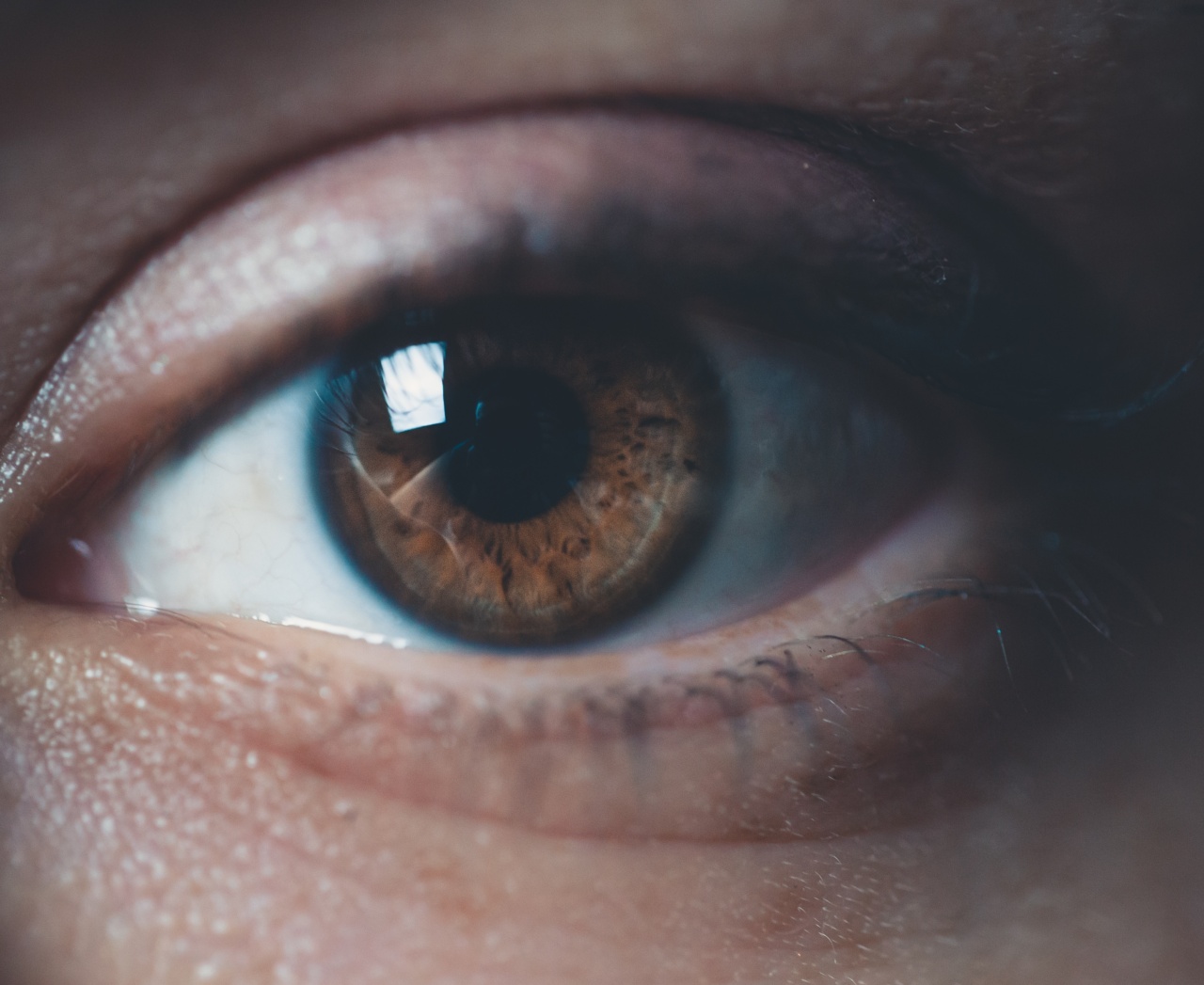Dry eyes are a common condition that occurs when your tear glands don’t produce enough tears to lubricate your eyes. This can lead to discomfort, irritation, and even cornea injury if left untreated.
In this article, we will explore the causes, symptoms, and treatment options for dry eyes and cornea injury.
Causes of Dry Eyes
There are several factors that can contribute to dry eyes:.
1. Aging
As we age, our tear production tends to decrease. This is a natural part of the aging process and can lead to dry eye symptoms.
2. Environmental Factors
Dry or windy climate, exposure to smoke or air conditioning, and dry indoor environments can also contribute to dry eyes.
3. Medications
Certain medications, such as antihistamines, decongestants, and antidepressants, can reduce tear production and cause dry eye symptoms.
4. Medical Conditions
Medical conditions like diabetes, rheumatoid arthritis, lupus, and thyroid disorders can increase the risk of developing dry eyes.
5. Hormonal Changes
Women undergoing hormonal changes due to pregnancy, menopause, or the use of oral contraceptives are more prone to developing dry eyes.
Symptoms of Dry Eyes
Common symptoms of dry eyes include:.
1. Dryness
Your eyes may feel dry and gritty, as if there is something foreign in them.
2. Irritation
You may experience itching, burning, redness, or a sensation of having something in your eye.
3. Excessive Tearing
In some cases, your eyes may produce an excessive amount of tears as a reflex to the dryness.
4. Blurry Vision
Your vision may become blurred, especially when focusing for extended periods or while using digital screens.
Cornea Injury
When dry eyes are left untreated, they can potentially lead to cornea injury. The cornea is the clear front surface of the eye that helps focus light onto the retina.
Without sufficient lubrication, the cornea can become damaged, leading to more severe symptoms.
Types of Cornea Injury
1. Corneal Abrasion.
Corneal Abrasion
A corneal abrasion refers to a scratch on the cornea. It can occur due to various factors, such as foreign objects in the eye or rubbing the eye vigorously. Symptoms may include eye pain, redness, tearing, and sensitivity to light.
2. Corneal Ulcer
A corneal ulcer is a more serious infection of the cornea. It can develop from a scratch or contact lens-related complications. Symptoms may include severe pain, blurred vision, discharge, and redness.
Prompt medical attention is necessary to prevent further damage.
Treatment Options
Treatment for dry eyes and cornea injury may include the following:.
1. Artificial Tears
Artificial tears are over-the-counter eye drops that help lubricate the eyes and alleviate dryness.
2. Prescription Eye Drops
In more severe cases, your doctor may prescribe medicated eye drops to reduce inflammation and increase tear production.
3. Punctal Plugs
Punctal plugs are tiny devices inserted into the tear ducts to block drainage and keep the tears on the surface of the eye for longer.
4. Moisture Chambers
Moisture chambers are protective eyewear designed to trap moisture around the eyes, providing relief from dryness.
5. Lifestyle Changes
Simple lifestyle changes can help manage dry eyes, such as using a humidifier, taking regular breaks from digital screens, and avoiding smoking or exposure to smoke.
Preventing Cornea Injury
To prevent cornea injury, it’s important to take proper care of your eyes:.
1. Avoid Eye Rubbing
Avoid rubbing your eyes, as this can cause scratches and introduce bacteria that may lead to infections.
2. Wear Protective Eyewear
When engaging in activities that may pose a risk to your eyes, such as sports or DIY projects, wear protective eyewear to prevent foreign objects from entering your eyes.
3. Proper Contact Lens Care
If you wear contact lenses, follow proper hygiene practices and guidelines recommended by your eye care professional to avoid corneal ulcers or infections.
Conclusion
Dry eyes can be a bothersome condition that, if left untreated, can lead to cornea injury. It’s essential to identify the causes and symptoms of dry eyes and seek appropriate treatment to prevent further complications.
By taking preventive measures and adopting proper eye care practices, you can maintain healthy eyes and reduce the risk of cornea injury.






























